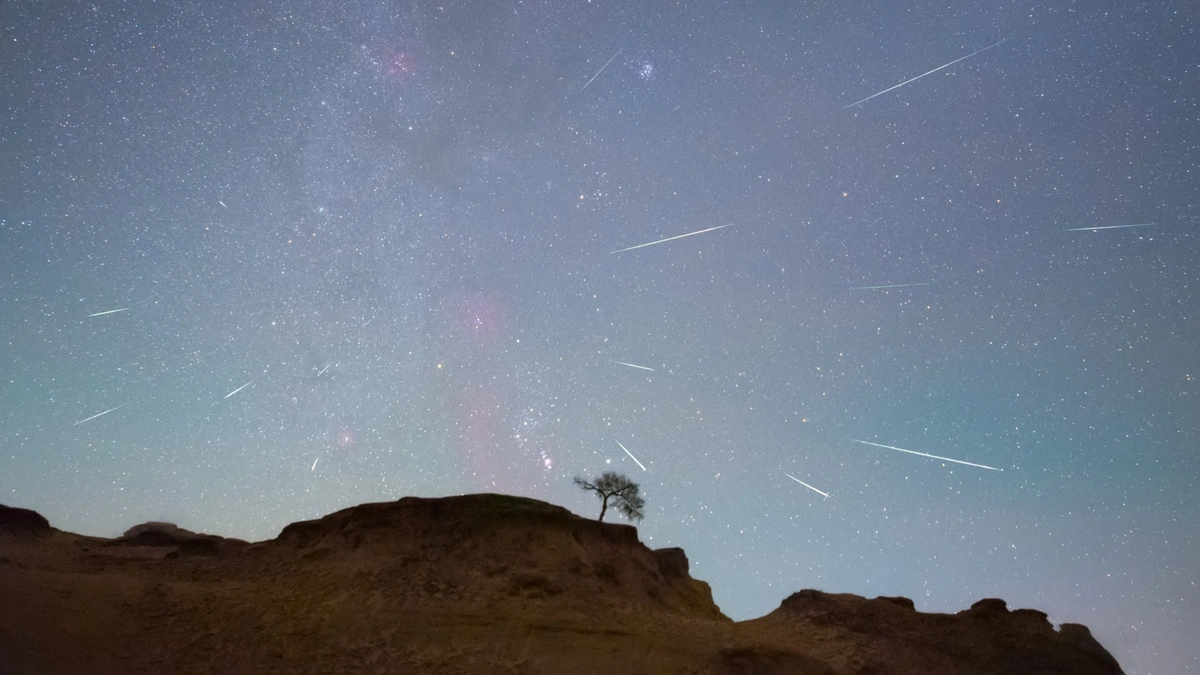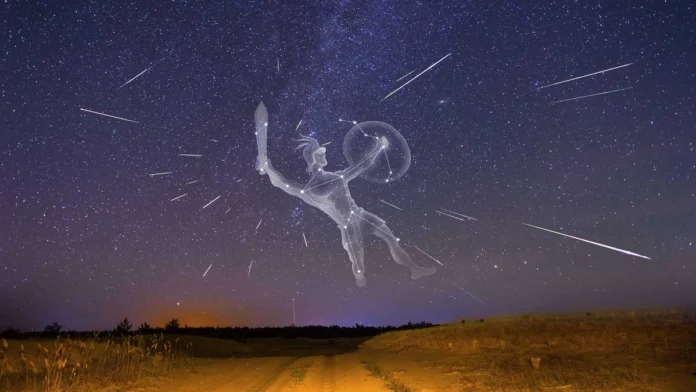Okay, folks, gather ’round! Let’s talk about something truly spectacular happening in our skies this October: the Orionids meteor shower . Now, I know what you might be thinking: “Another meteor shower? What’s so special about this one?” Here’s the thing – and trust me on this – the Orionids aren’t just another celestial light show. They’re a chance to connect with something ancient, something… cosmic.
I want to give you not just the what, where, and when, but also the why and the how. How to actually make the most of it, you know? A common mistake I see people making is just stepping outside and staring up. Let’s elevate your stargazing game, shall we?
Why the Orionids Matter (More Than You Think)

So, what fascinates me is that the Orionids meteor shower is essentially space dust left behind by the most famous comet of all time: Halley’s Comet . Yep, you read that right. Every year, as Earth orbits the Sun, we plow through this debris field, and those tiny particles burn up in our atmosphere, creating those beautiful streaks of light. It’s like Halley’s Comet is still visiting us, even though it won’t be back in our neck of the woods until 2061. That’s a pretty long time to wait!
But there’s more to it than just pretty lights. Think about it: We’re literally witnessing remnants of a comet that has been orbiting our Sun for thousands of years. These meteors have probably been seen by countless generations of humans, from ancient civilizations to our own time. Experiencing the Orionids is like participating in a shared human experience, a connection to the past and a reminder of our place in the vast universe. And in today’s crazy world, who doesn’t need a little perspective?
And while sources suggest specific peak dates each year, the beauty of a meteor shower is its unpredictability. You might catch a glimpse of a stray meteor days before or after the predicted peak. Be patient and keep looking up!
When and Where to See the Orionids
Okay, let’s get down to the nitty-gritty: when and where should you be looking? The Orionids are typically active throughout October, but the peak viewing time is usually around October 20-22. That’s when you’re most likely to see the highest number of meteors per hour.
Here’s the thing: the later in the night you observe, the better your chances of spotting meteors. Why? Because the part of Earth you’re standing on will be rotating into the direction of Earth’s orbit, effectively putting you on the “windshield” of the planet, collecting more space dust. Generally, after midnight until dawn is prime time.
Now, about the “where.” The meteor shower’s radiant (the point in the sky from which the meteors appear to originate) is in the constellation Orion, near the bright star Betelgeuse. Don’t worry if you can’t find Orion – the meteors will appear all over the sky, so just find a dark spot with a wide-open view.
Pro Tips for the Ultimate Orionids Experience
Alright, let’s boost your viewing game. A common mistake I see people making is thinking that you need a telescope. Nope! Telescopes actually restrict your field of view. Meteors streak across the entire sky, so you want your naked eyes or maybe a pair of binoculars for a wider perspective.
So, here’s my breakdown to guide you:
- Location, Location, Location: Get as far away from city lights as possible. Light pollution is the enemy. The darker the sky, the more meteors you’ll see.
- Be Patient: Your eyes need time to adjust to the darkness – at least 20-30 minutes. Resist the urge to look at your phone (seriously!).
- Get Comfortable: Bring a blanket or a lawn chair. You’ll be spending some time outside, so make sure you’re cozy.
- Look Up!: Once your eyes are adjusted, simply lie back and scan the sky. No need to focus on Orion specifically; the meteors will appear all over.
And let’s be honest – stargazing is more fun with company. Grab some friends, pack some snacks, and make it a night to remember.
Also, check the lunar phase . A bright moon can wash out fainter meteors. A new moon or crescent moon is ideal for viewing. But even with a bright moon, you can still see some of the brighter Orionid meteors .
The Science Behind the Spectacle
So, the Orionids aren’t just pretty lights; they’re a lesson in orbital mechanics and the history of our solar system. These meteors, tiny as they are, are traveling at incredible speeds – upwards of 148,000 miles per hour! That’s why they create such a bright flash when they hit our atmosphere.
And the colors? The different colors you see in meteors are due to the chemical composition of the particles and the air they’re burning through. It’s like a cosmic fireworks display, with each element contributing its own unique hue.
What if the weather is bad?
Okay, let’s address the elephant in the room. What if it’s cloudy? Well, that’s the frustrating thing about meteor showers – you’re at the mercy of the weather. But don’t despair! Meteor showers often last for several days, so you might have another chance to see them on a different night. Keep an eye on the forecast and be ready to pounce if the skies clear up.
And if you miss the Orionids this year, don’t worry. There are plenty of other annual meteor showers to look forward to, like the Leonids in November and the Geminids in December. The universe is constantly putting on a show for us; we just need to take the time to look up.
So get out there and witness the magic of the Orionids. You won’t regret it.
FAQ About Orionids Meteor Shower
What exactly is Halley’s Comet?
It’s a periodic comet that orbits the Sun every 75-76 years, famous for being visible to the naked eye from Earth.
What if I miss the peak viewing time?
The Orionids are active for several days, so you might still see meteors before or after the peak, although fewer in number.
What if I live in a city with a lot of light pollution?
Try to find a park or open space away from streetlights, or consider traveling to a darker location outside the city.
What should I wear when stargazing?
Dress warmly in layers, even if the daytime temperature is mild, as it can get chilly at night.

